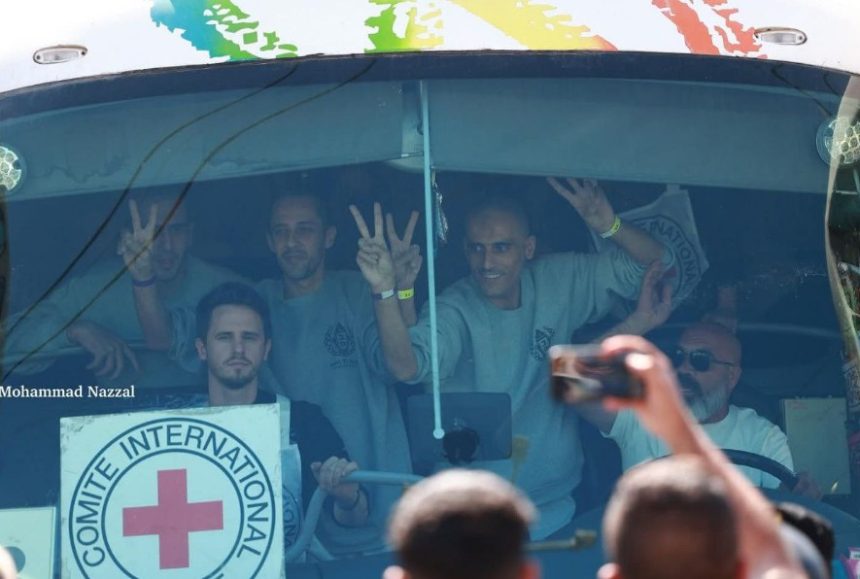Israel-Hamas Exchange Rekindles Hope, but the Gaza Ceasefire Remains Fragile
A flicker of stopgap has returned to the Middle East. On Monday, Israel and Hamas completed the first phase of a delicate Gaza ceasefire, swapping hostages and captives in a move hailed as a step towards peace.
Yet beneath the relief lies apprehension; the deal remains fragile, shadowed by undetermined questions over power, demilitarization, and Palestine’s future.
In a moment of intense emotion, “the 20 remaining living hostages” were freed, sparking elation across Israel. Thousands gathered in city squares to watch live reunions, tearful embraces after years of dread.
Still, the joy was bittersweet. Families of those still missing pledged not to rest until every interned is reckoned for, alive or departed.
Unlike former releases, there were no public observances this time. Rather, cousins first saw their loved ones through videotape calls arranged by masked zealots, a nipping memorial of how entwined politics and suffering have come.
In exchange, nearly 1,900 Palestinian captives were released from Israeli jails. The scenes in Gaza and the West Bank were triumphant.
Crowds filled the thoroughfares; flags gestured; chants filled the air. Yet the reality remains grim.
Gaza lies shattered. Whole neighborhoods are gone. Hospitals are strained, clean water is scarce, and electricity flickers on and off. Philanthropic aid is trickling in, but it slightly scratches the surface of what’s demanded.
Rebuilding Gaza will demand billions, and answers. Who will lead the reconstruction? Who will pay for it?
For now, guns have fallen silent. But questions hang in the air.
Israel insists that Hamas must disarm for any permanent truce. Hamas refuses, saying disarmament will only happen after Israel withdraws all troops from Gaza.
At present, Israeli forces have retreated from parts of Gaza City and Khan Younis, but remain stationed in Rafah, northern Gaza, and along the border.
The other pressing issue, who will rule Gaza, is equally thorny. Under the US-brokered plan, international oversight is proposed, with Palestinian technocrats managing daily governance.
Hamas rejects this, insisting that only Palestinians should decide their leadership.
The Palestinian Authority, led by Mahmoud Abbas, could also return under this plan, though that prospect divides opinion sharply.
Prime Minister Benjamin Netanyahu has long resisted such a move without sweeping reforms.
Adding to the complexity, an Arab-led international security force is set to assist Palestinian police as Israeli troops withdraw gradually.
Approximately 200 US personnel are reportedly in the region to monitor the progress of the truce.
The conflict’s toll is staggering. The war, triggered by Hamas’s October 2023 assault that killed around 1,200 people and led to 251 hostages, has since claimed more than 67,000 Palestinian lives, according to local authorities.
The violence spilled beyond Gaza’s borders, drawing in Hezbollah, Iranian-aligned militias in Yemen, and Iran itself.
For Israel, the regional pressure has been immense, with critics accusing its leadership of dragging out the war for political survival, a claim Netanyahu denies.
For now, the Gaza ceasefire stands, tentative, uneasy, but real. It represents a pause, not an ending. The core disputes, disarmament, governance, and statehood, remain unresolved, threatening to unravel the fragile calm.
The UK and its allies are watching closely. Prime Minister Keir Starmer has welcomed the ceasefire, calling it a “necessary step towards a lasting peace.”
Yet many in Westminster warn that without a genuine path to Palestinian statehood, any truce risks collapsing under its own weight.
The world is weary of this war. But weariness alone won’t end it. Patience, diplomacy, and courage might.
And for those on both sides of the border, peace, however fragile, remains the only way forward.






